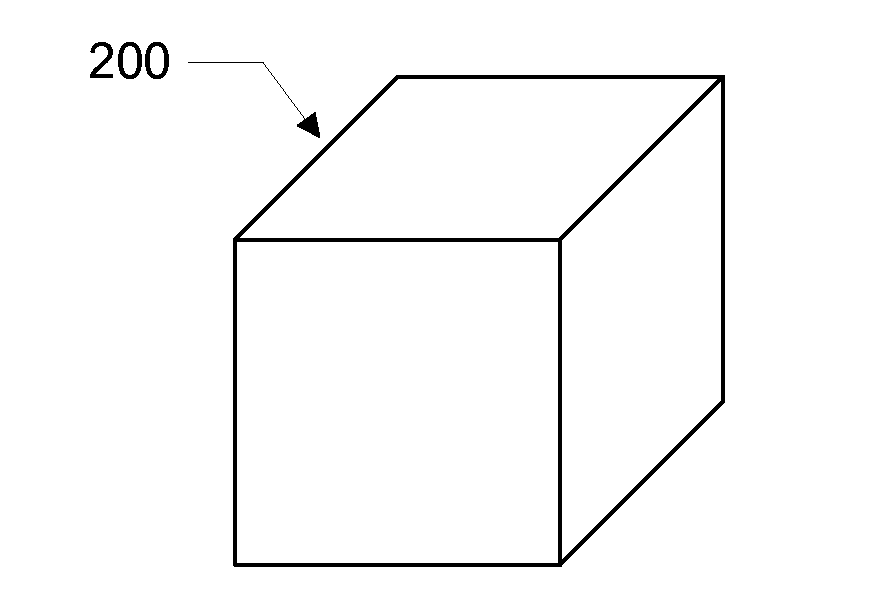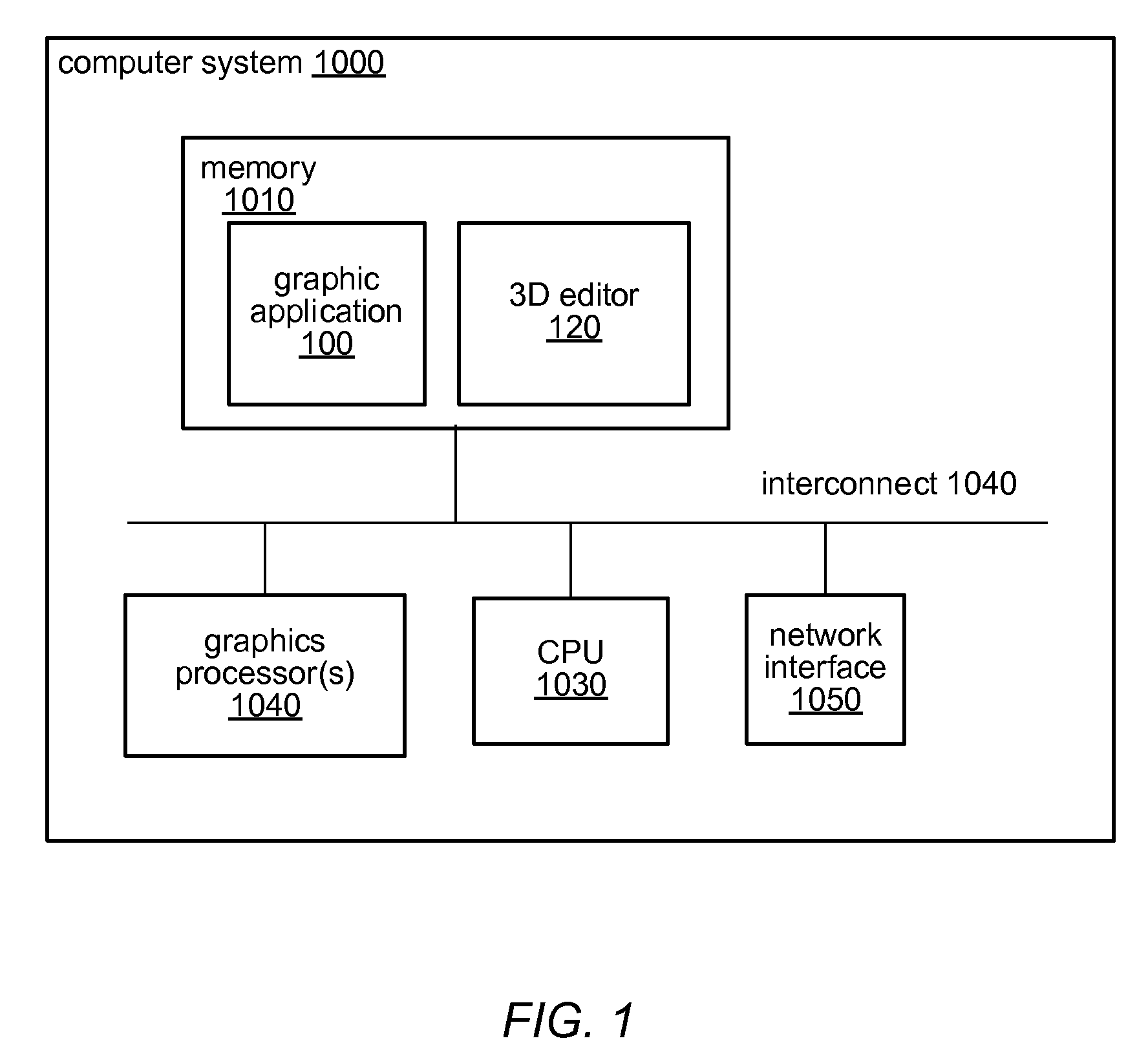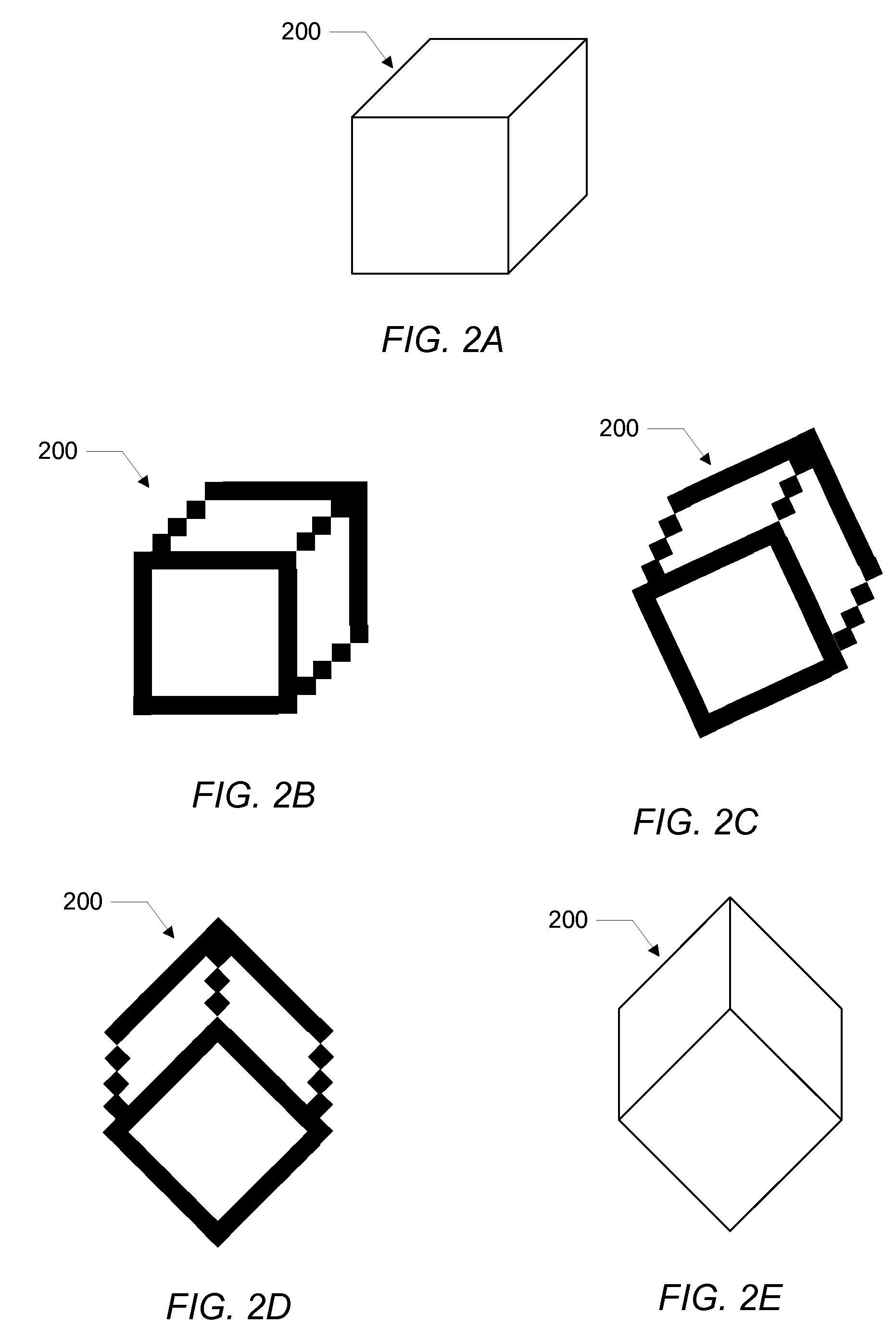Temporary Non-Tiled Rendering of 3D Objects
a technology of 3d objects and non-tiles, applied in the field of computer systems, can solve problems such as performance problems and 3d models using multiple tiles, and achieve the effect of increasing performance and response tim
- Summary
- Abstract
- Description
- Claims
- Application Information
AI Technical Summary
Benefits of technology
Problems solved by technology
Method used
Image
Examples
Embodiment Construction
[0019]A graphics application may be configured to render 3D scenes in a tiled, raster environment. Generally, each image in a tiled, raster environment has an associated or specified resolution in terms of pixels. In other words, an image naturally has a particular size in terms of pixels associated with it. For instance, when creating a new image, a user may specify the overall size of the image in pixels, such as 800×600 or 1280×1024. Thus, when drawing or rendering objects into an image, a graphics application may be configured to render the objects at the resolution specified for the image. Additionally, rather than render the entire image at once at the specified resolution, the graphics application may be configured to render the image as a set of image tiles, where each image tile represents a small portion of the overall image. Using multiple image tiles to render an image, especially a large, high-resolution image, may prevent having to load the entire image into memory.
[00...
PUM
 Login to View More
Login to View More Abstract
Description
Claims
Application Information
 Login to View More
Login to View More - R&D
- Intellectual Property
- Life Sciences
- Materials
- Tech Scout
- Unparalleled Data Quality
- Higher Quality Content
- 60% Fewer Hallucinations
Browse by: Latest US Patents, China's latest patents, Technical Efficacy Thesaurus, Application Domain, Technology Topic, Popular Technical Reports.
© 2025 PatSnap. All rights reserved.Legal|Privacy policy|Modern Slavery Act Transparency Statement|Sitemap|About US| Contact US: help@patsnap.com



